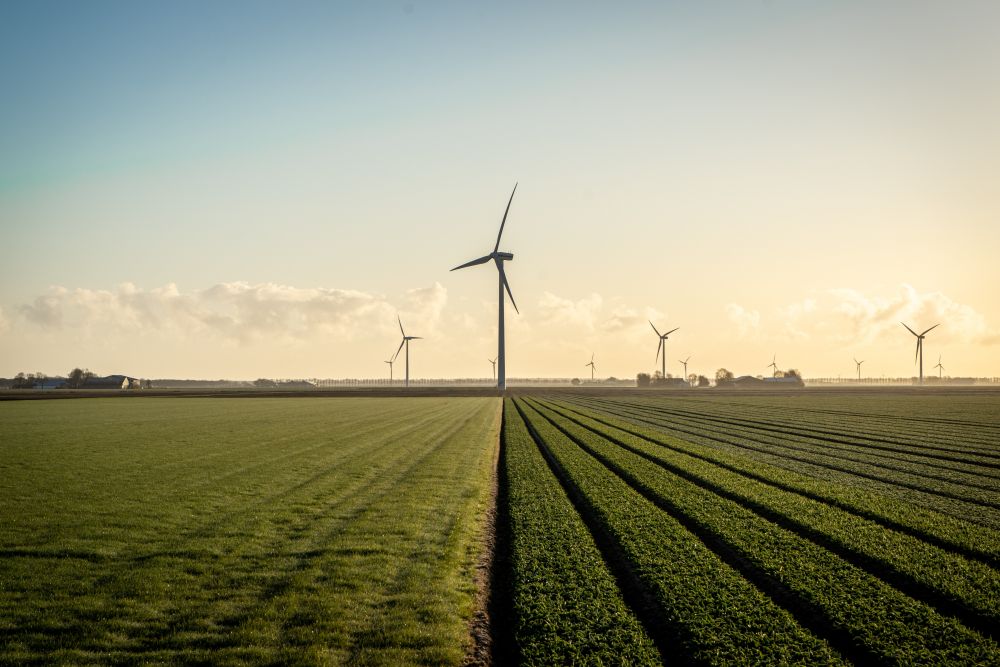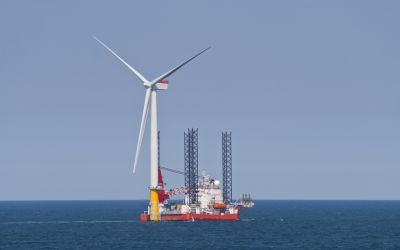Increasing UK onshore wind capacity would affect just 0.02% of land, finds new analysis
New analysis by the Energy and Climate Intelligence Unit has found that the area of land that could be affected by onshore wind farms in future is just 0.02% of the UK's total land.

New analysis by the Energy and Climate Intelligence Unit has found that the area of land that could be affected by onshore wind farms in future is just 0.02% of the UK's total land.
The UK currently has 15 gigawatts of onshore wind, and the Government has previously considered expanding this to 45 gigawatts by 2035. But a ban on onshore wind in England stands in the way of this.
It is estimated that each onshore wind farm can typically provide 9 megawatts of power from each square kilometre. But the turbines themselves stand on only a very small part of this area, around 1%, leaving 99% of the area free for farming or nature and wildlife.
45 gigawatts of onshore wind would require around 5,000 square kilometres, or 2.1% of the UK's land. But 99% of this area would be free for other uses in between the turbines themselves, meaning that a total of just 50 square kilometres (or 5,000 hectares) would be occupied by the turbines. This is less than one fifth of the area used by landfill sites. These wind farms would generate more than the amount of electricity currently used by all 29 million homes in the UK.
The land required for onshore wind farms is 3,500 times less than that used for agriculture. Not all farmed land is very productive with a fifth (20%), often located in uplands areas, producing just 3% of food (by calories).
Onshore wind has also been found to be very popular with the public, with 73% of Conservative voters saying they would support an onshore wind farm in their area.
This year the UK's food production and prices have been severely affected by climate change and the price of oil and gas. A report published in October by ECIU found that each UK household is paying on average £400 more for food this year due to the impacts of climate change and oil and gas prices.
Matt Williams, land analyst at the Energy and Climate Intelligence Unit (ECIU), said: "The real risk to the UK's food security is climate change and the record price of gas. Farmers and families have been feeling these effects through food bills at the checkout and through record farm bills for energy and gas-based fertilisers. This year's drought left many crops withering in the fields.
"Onshore wind is cheap, popular with the public, and requires very little land. In fact, this is such a tiny fraction of the UK's land, that it will have no real impact on other land uses such as farming. It can also support food production by providing secure revenue streams to help keep struggling farmers afloat.”
Find out more here.



_400_250_80_s_c1.jpg)


